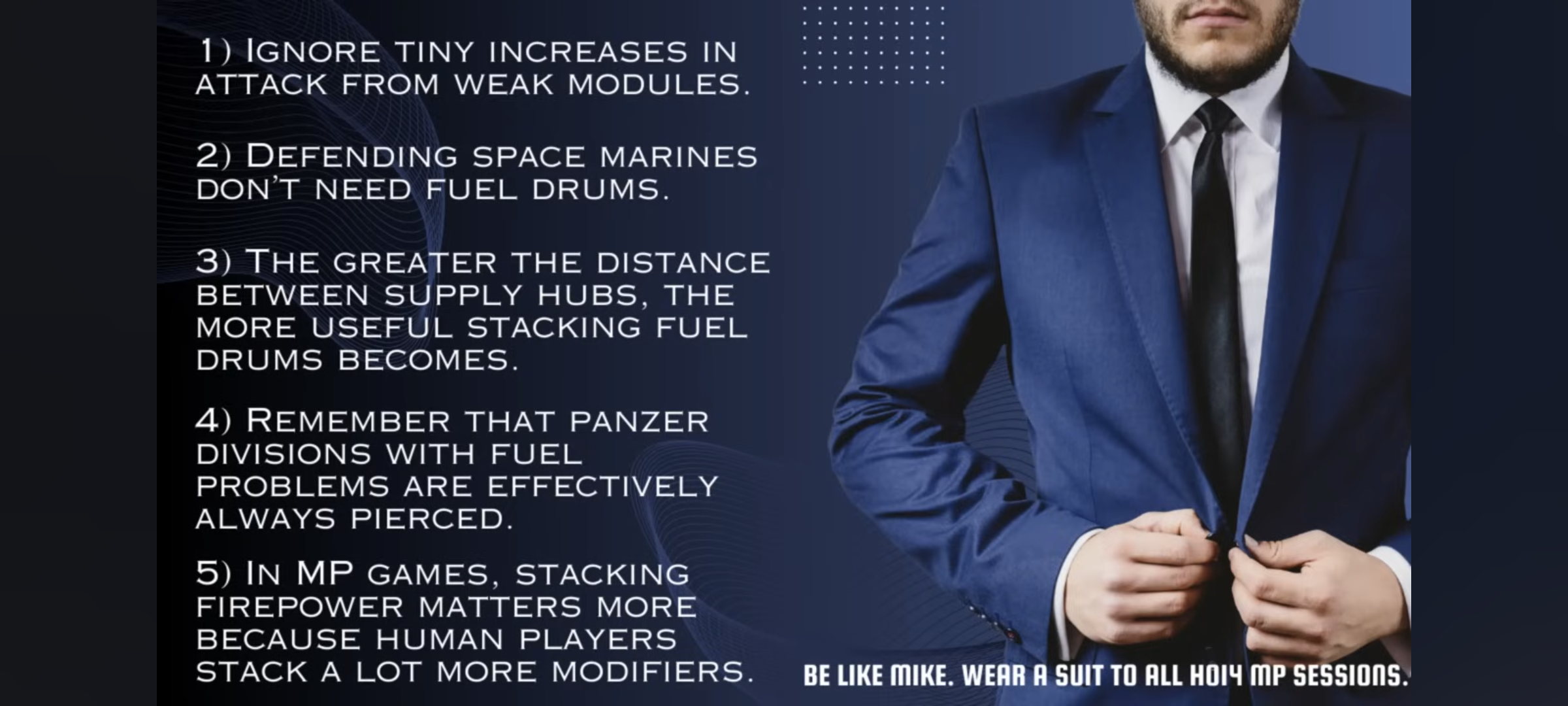I’ve seen people reduce the number of battalions in their divisions, avoiding the usual 20w or 35w templates, and instead going with 10w or 15w. Do you think it's worth it?
note that for the same reasons small divisions are typically better in attack per width, they are worse in supply per width.
if you use no support companies, three 12w divisions and one 36w division of the same battalion will use the same exact supply. if you use support companies other than logistics, they all use supplies, and 12w will make three copies of those support companies (they also make 3 copies of logistics companies, but that "only" costs more ic).
you only gain an advantage in supply using small divisions if you intend to cover parts of a front line w/o using full combat width available to terrain. if you fully utilize width, large divisions use less supply, not more.
Another question: I’ve seen people design tank variants with fuel tanks to make them last longer in low-supply areas. I tested it but didn’t notice any difference. Is it really worth it?
usually it is not. you still take poor supply penalties before running out fuel, if you burn through supply grace. it is much more practical to stay within supply range of port/hub. fuel drums are poorly implemented. making vehicles move faster also saves fuel and is almost strictly better.
as for desert...it doesn't inflict much combat penalty. it inflicts attrition while moving/fighting and influences supply a bit. around egypt itself, supply is pretty reasonable. there are plenty of ports & hubs. there is a long distance between supply sources in egypt and ports along the northern coast of africa. it is possible to use divisions with high speed or high amounts of supply grace to hit distant ports in single player, and you can also just naval invade. if you want, you could also make extra ports along the coast, although this is a small waste of civ ic it makes conquering through north africa a bit easier.
Once enemy units have lost supply, then standard 7/2 infantry divs
7/2 has not been standard since 2018. the reason is related to what i said about supply in big vs small divisions above; the stats line artillery gives simply don't compete well for most purposes in most doctrines once you have to fit it into a given combat width...most players simply do not intuit what the stats in division design screen actually mean in terms of combat-within-width.
depending on exact doctrine & tech, a 9/1 and 9/3 could be better or worse than each other offensively. in some contexts, they are basically identical. if you use superior firepower, a 6/0 will outdamage both of them by a considerable margin when used offensively. many players read that and just balk. they don't understand why it's true. the numbers for a 9/3 look bigger.
it doesn't change reality; when a human isn't counter-clicking you, the 6/0 has more org, does more damage per width, and often as a consequence *takes* less damage when attacking (fewer combat hours), while doing things like attacking into mountains without any terrain penalties at all...as long as you're fighting at full combat width. using different doctrines & different situations, 6/0 could actually take more damage for multiple reasons (high hardness enemy, can't win the combat etc). the important takeaway is stats per width, width you will fight, and what you will fight.


